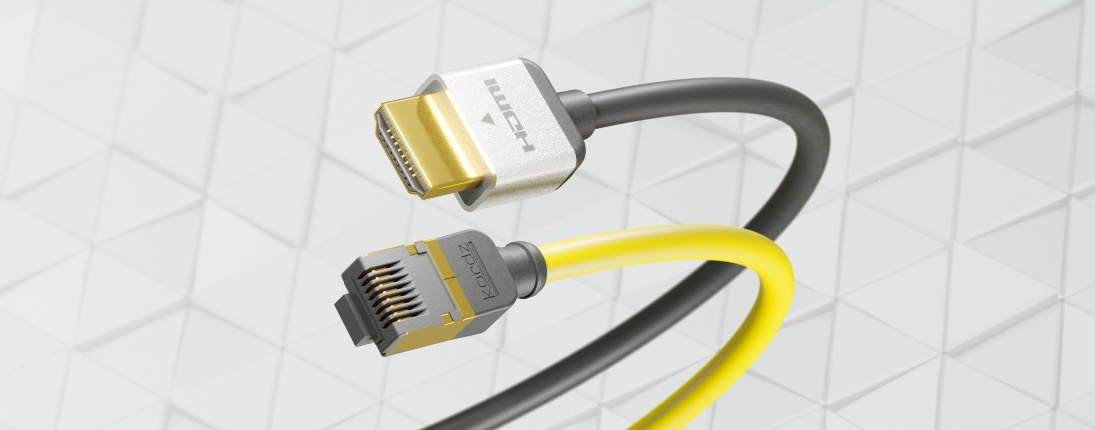
This is the first part of a series exploring a strategy for installation professionals to create greater impact through reliable people, processes and products.
Our Current Context
According to CEDIA’s COVID-19 Industry Report conducted in April 2020, between 68-75% of system integrators have experienced fewer bids since the pandemic began. Around half stated the dollar value of bids had not changed, and the other half stated they had fallen. Additionally, between 50-75% of integrators reported seeing lower project closure rates.
As a result, the majority of companies already have or plan to implement layoffs or forced leave. Most integrators are worried about their business’s future, and about half report extreme concerns, mainly regarding their ability to pay their bills, their staff’s health, and relationships with their clients.
So if companies are forced to lay off stay and create the same results from less, how can they ensure quality of work remains high and they protect the reputation of their business?
It is essential that AV professionals maximise customer satisfaction and minimise the risk of poor work that may lead to a loss in confidence in the value of professional AV installation. As an industry, we must provide certainty and seamlessness to the customers supporting us and prevent disconnection before it happens.
At Kordz, we believe it is our professional responsibility to adopt a forward thinking strategy for predictable reliability: the attributes that create the feeling of trust in our industry and its technology, and that support its credibility and financial recovery into growth.
In this article, we’ll explore why the current trend of assuming reliability is unsustainable, how to rethink reliability for the present, and how we must predict reliability in the near future for the benefit of those we serve.
We’ve written this article to inspire dialogue on the connectivity environment, its current challenges and how to address these in a dynamically changing future. We hope that we can solve the recurring issues of our industry and predict the near-future challenges together.
The Case for Predictable Reliability
As a technology and AV installation professional, you focus entirely on the experience of the end user and the impact your work will make on their lives. You succeed by the effectiveness of the products and services you stand by, so long as they stand by you. But do you ever get the feeling of doubt, of uncertainty that the work you’re doing is reliant on variables in the connectivity environment beyond your control?
Devices are independent of the system. Software updates, compatibility between emerging convergent technologies and the user’s reliance on habit are variables that cannot assure your work is reliable. Incompatibilities or exceptions that lead to unpredictable intermittent failures are also implied by the false promise of technological convergence.
Nobody enjoys returning to a job that didn’t go to plan the first time. It causes a personal disconnection between you and the client. And now, a precedent of unreliability is set. Not particularly that you, the professional, are unreliable. But the promise of connectivity within a system is uncertain and trust in the outcome of your work is shaken.
This is uncertainty. It occurs when communication is not clear. This is true of cables between devices, our relationships with clients and the communication we have inside and between organisations.
Installers, integrators, systems tech personnel and other AV professionals have the challenging job of adapting to this new wave of industry uncertainty and the complexity of technological convergence, all the while navigating solutions to address them during a global crisis.
Assuming Reliability is Unsustainable
Reliability is the delivery of a positive and lasting connection. It is a larger concept meaning what is promised will happen. As technologies converge to simplify human experiences, the expectation of reliability grows. And as a result, reliability is constantly unresolved.
For reliability to be possible now, it requires familiar thinking with new knowledge in evolving technologies and the ability to understand the subtle nuances of the environment we are working in, the devices involved and the variables at play between it all. Regulations, compromises, blind faith and budget can impede our ability to move reliability forward.
“HDMI, for example, has a backwards compatibility rule where all new versions must work with older versions. As a result, future development is hindered by compromises of the past. Eventually a jump or redesign has to be made. At this juncture there are many areas of NO connectivity and therefore NO reliability.“
James Chen – Managing Director, Kordz
As professionals, it is our lack of attention, know-how and industry research that creates blindspots. Physical connection from A to B without understanding the pathway is not connection. And physical connection does not equal signal integrity. It is an assumption, a hope, a whim. When people purchase a cable they assume, ‘this is new, so when I plug it in it will connect’. In fact, we are only assured of connection when the device is charging, when it has power, when it registers true connection and it maintains it.
People don’t use technology they don’t trust – unless it’s cheap. And if it’s cheap, it can be discarded. The alternative is investing in higher cost products, which buyers equate with quality and reliability. However, too often, even costly connectivity products don’t do what they say because their creators have neglected to anticipate potential failures.
How does this happen?
How could products cost more yet serve us less?
In today’s world, speed to market is considered better and compromise in product design and engineering has become the norm, as many manufacturers lack detailed understanding of the wide parameters of the AV environment. In complex systems with external variables like electromagnetic interference, heat and cramped installation space, a compromised product creates issues in itself.
This can only lead to problems, with market-wide assumptions and expectations of product reliability and a push for consumerism driving speed to market that is increasingly coming at the expense of quality when corners are cut. Products will – and already do – regularly prove unreliable, and instead become frustrating and expendable, devaluing the associated brands.
Serve More People Better
Imagine an unshielded, inflexible cable in a hot, electronically noisy and cramped rack installation. It is – in no uncertain terms – inappropriate. It is unfair to assume this cable product will serve its purpose. It can’t. It wasn’t designed with this environment in mind, and the materials and engineering physically cannot allow performance.
Now apply a hefty price tag to this ‘solution’. Sure, it might boast high-performance capabilities. Yet, has your professional promise of system connectivity been fulfilled? No. It is uncertain. Communication may fail as a result, leaving the installation unreliable and the trust in the outcome of your work now compromised.
If it isn’t robust, it never connects. It never performs.
Now imagine this same product hasn’t accounted for the device technology at either end of the cable. Even if the cable survives the harsh installation environment, can it perform as the medium between the two devices carrying the signal? Compatibility issues, limited performance, defective signals, and simultaneous task overload cause uncertainty, all while devices are advancing rapidly. It’s a nightmare for users. A ‘cheap’ solution comes at a price and expense does not necessarily deliver a solution.
Now, insert a shielded cable purpose engineered to defy the environment and quietly perform to the same requirements. It’s effective, reliable and robust. It does what it is meant to do because reliability was predicted for its environment. It is appropriate. And it does so with modesty and dignity.
Providing More Client Trust
In the current environment, failure is not a matter of if, but when.
As reliability often depends on variables outside our control, product creation must move beyond reactivity and embrace the leading edge of industry knowledge to effectively shape the near-future of connectivity. Taking quality for granted is antiquated.
A new approach to reliability is needed. As AV professionals, you want reliable connectivity. It’s what you’re paid for. End users assume a reliable experience done at the press of a button. It’s what they’ve paid for.
So how do you minimise uncertainty and predict reliability to provide more client trust?
Simply put, you must understand your environment, align with a supplier that shares your values, determine their level of knowledge and identify their industry partners, who know even more.
In collaborative industry groups, suppliers understand how they fit into the broader picture. Even if a supplier is smaller, they may still be able to provide significant personalised support. And even if a supplier is larger, it does not mean they remain responsive to the community and its changing everyday needs.
The takeaway is to continue to learn from a like-minded, informed supplier who does the hardest thinking for you and makes it easier to get it right the first time, every time. You can specialise in what you do, and then partner with them as a complement to your knowledge and a trusted guide. Then you can experiment and work together to achieve a predictably reliable outcome for your efforts.
The result is more client trust.
That’s the true ‘product’. It’s the reason for being and the reason for doing.
And client trust leads to more referrals, more work, and a more sustainable business in a rocky time in history.
That’s why at Kordz, we create products with predictable reliability in mind.
You get products that perform as promised regardless of the environment and that allow you to move business forward.
We are the connectivity company.
Learning how to adapt emerging connectivity products for tomorrow takes deep knowledge of the connectivity environment, and our team has decades of experience on the tools, the close affiliation with the leading certifiers, as well as future tech and design know-how.
We all want predictable reliability. And if we want it, then we must engineer it.
And so, at Kordz our goal is a fast and effective, yet stable and predictable connectivity experience for users, every time, which means paving a new road everyday through an industry that is expanding constantly.
Case Study
Red Dragon: Innovating connectivity in an unforgiving environment
Red Dragon is a 170ft superyacht available for charter at US$250,000. It boasts modern AV performance and reliability despite corrosivity, reflectivity and vibrations in tight bulkhead spaces. HDMI cables were commonly stiff, rigid and prioritised performance over ease of use and installation versatility at the time Red Dragon was built. Connectors were poorly crafted and either came apart or fell out of their sockets due to motion, use and the weight of the heavy cable length. Kordz engineered EVS (now Bravo) to be individually shielded against electrical noise and water reflectivity with new materials for greater resilience, long-term reliability, compactness, flexibility and a newly designed connector to combat the unpredictable impact of the ocean. We engineered a predictably reliable solution in an unforgiving electronic environment. Read more here.
© 2024 Kordz International. All Rights Reserved.
Please note, re-publishing of the contents of this article is prohibited; however, Kordz encourages the link to this page to be shared. If media, distributors, educators or others wish to share this information, we request you author your own post or article and link it to this page on kordz.com.
